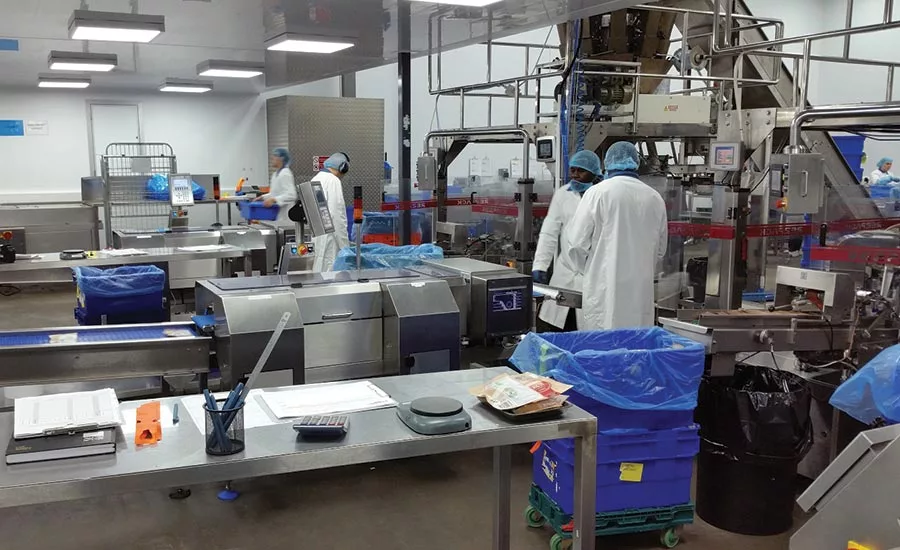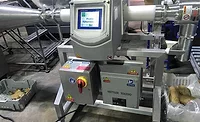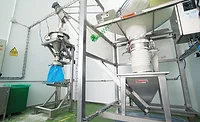Dry Processing Technology
Meat snack exporter detects success with Fortress
Metal detectors avoid false positives from oxygen absorber

When UK-based Meatsnacks Group needed a metal detector that wouldn’t return false positives from oxygen absorbers, it turned to Fortress Technology for a specialized solution.
Photo courtesy of Fortress Technology
With demand for beef jerky and other portable protein rich snacks outstripping conventional savory snacks, Europe’s leading manufacturer and exporter of beef biltong and jerky— Meatsnacks Group—continues to rack up impressive sales. As in North America, dietary trends in Europe are seeing consumers switch from carbohydrate-loaded snacks to those that pack more nutritional punch.
The meat snack segment, valued in the US last year at $2.8 billion, has seen consistent 7 percent sales growth year over year. It’s a similar picture in Europe, with analysts at Ireland-based Research and Markets predicting sales of meat snacks in Europe could reach $4.59 billion by 2025.
For Meatsnacks Group, which commands 78 percent of the local UK market share, the rising popularity of its premium low-fat, air-dried and cooked and smoked meat snacks is resulting in year-over-year double-digit growth. To cope with this heightened demand, the company recently invested in three Phantom metal detectors from Fortress Technology, as it was the only food inspection provider to offer a system that could filter out the signal generated by iron filings from each packet’s scavenger oxygen absorber.
Prior to installing the three conveyor-style Fortress metal detectors, the BRC-accredited food producer says its Milton Keynes operation increasingly relied on contractors to hand pack and seal packets of biltong, which proved labor intensive.
“Now, we have three fully automated lines, which checkweigh, fill packs, insert the scavenger and inspect for metal contaminants,” says David Stephenson, engineering manager at the Milton Keynes production site. “It has given us increased capacity, with our three lines now running non-stop 11 hours a day, six days a week.”
In order to maintain the shelf life of up to 18 months and protect the products from spoilage, Meatsnacks Group inserts the scavenger absorber into every packet of jerky and biltong.
“We find it’s more effective than gas flushing, and it’s a less complex process for extending shelf life and limiting the growth of aerobic spoilage organisms. Scavengers, which are especially popular in the US market, also protect against loss of color and flavor,” says Stephenson.
Scavengers are easy to insert and irreversibly absorb oxygen inside sealed packaging to less than 0.01 percent. However, because they contain fine, powdered iron filings, they present a challenge to food inspection metal detectors. To solve this, Fortress installed its unique Scavenger software onto each Phantom metal detector. This enables Meatsnacks to simultaneously inspect for metal contaminants in addition to confirming whether each of the thousands of packs processed daily contains an oxygen scavenger.
Meatsnacks ruled out X-ray machines, partly because they are more expensive, but also due to the fact that contaminant risks are more likely to be metal, such as buckshot in the meat or fragments of stainless steel from the processing equipment.
To maximize sensitivity, Fortress supplied an aperture measuring 350 mm by 125 mm, which accommodates both the small and larger biltong and jerky packs.
“To recalibrate, our operatives simply press a button, pass a pack without the scavenger absorber in it through the metal detector and then one with a scavenger in it,” says Stephenson. “The pack with the scavenger in it provides the signal benchmark, and then, anything above this calibrated signal indicates that there’s a metal contaminant, and the pack would be rejected.”
For more information, visit www.fortresstechnology.com
Looking for a reprint of this article?
From high-res PDFs to custom plaques, order your copy today!








